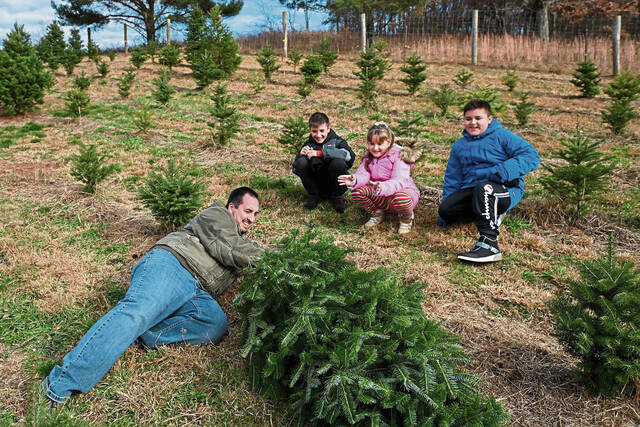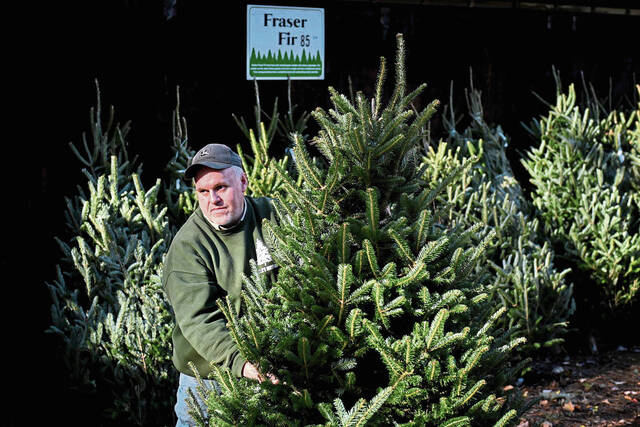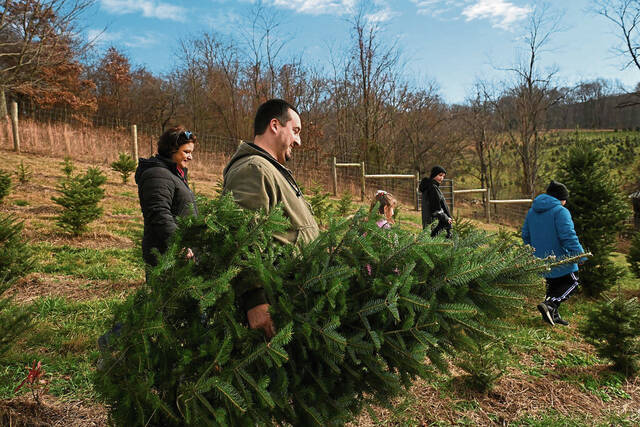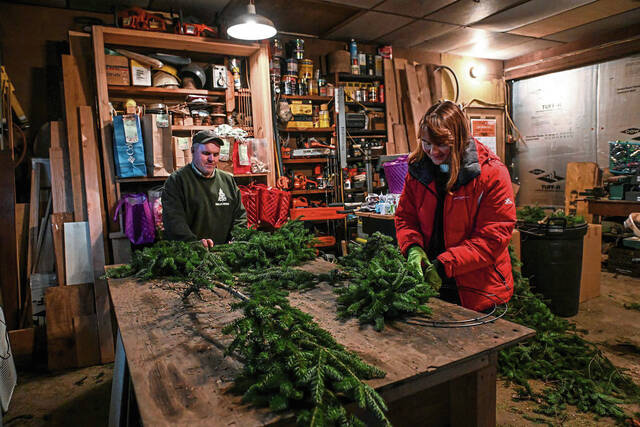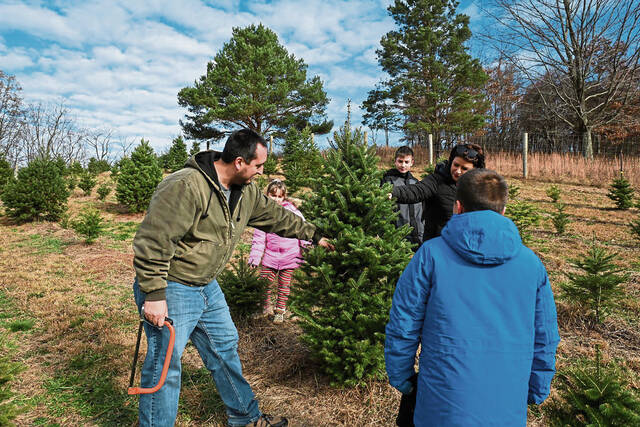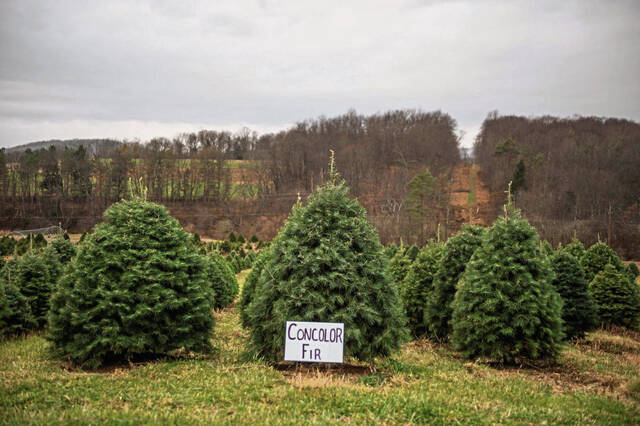5 things to consider when picking a live Christmas tree
The Christmas tree tends to be the centerpiece when the halls are decked for the holidays. The question can be whether to go with a live or artificial tree.
Here are two things to consider when making the choice:
Shopping for a live tree is a great way to make holiday memories, from bundling up for the outdoor experience to singing carols along the way to the good-natured debate over the best pick.
On the other hand, it’s hard to make a tradition around dragging a box out of the attic or garage and plopping the fake tree in its stand.
Also, if you’re worried about environmental impacts, a living tree is a sustainable resource that is recyclable and biodegradable.
Alternately, artificial trees are made from plastic and steel, require more energy to produce, often are manufactured and shipped from overseas and eventually end up in landfills. The effect on the environment is less the longer an artificial tree is used, but once it’s discarded, it can’t be reused or recycled.
If you’re going with a live tree this year, here are five things to consider.
The right choice
“When somebody picks out a tree, I might think there’s a better one out there — but people like what they like,” said John McMeekin, owner of McMeekin Christmas Trees in Penn Hills.
McMeekin grows and sells a variety of pines, firs and spruces in heights up to about 20 feet.
Color, shape and size all come down to personal preference, said Mike Ridilla, owner of Ridilla’s Tree Farm in Unity. Ridilla also grows various conifers and sources others from Indiana County.
Pines and firs have softer needles, while spruce needles are sharp — something to take into account when decorating, especially if little hands are involved.
Firs have a stiffer branch that can hold a heavier ornament, McMeekin said. Firs and spruce also tend to be more expensive, because they take longer than pines to grow.
For freshness, look for a locally grown and recently harvested tree, he added. Trees shipped from out of state may have been cut weeks ago.
While a tree will look and smell best on Christmas day if it’s newly cut, McMeekin said, he understands that many people like to decorate far in advance — either to extend the holiday season or to have some help with the task.
“You look around, and Christmas stuff is in the stores in October,” he said. “We used to start selling two weekends before Christmas, now a lot of customers want their trees right around Thanksgiving.
“Maybe that’s the only time the kids are home from college, so that’s when they have to (put them up).”
Signs of freshness include a slightly sticky trunk and needles that don’t shed when branches are gently pulled. While tree hues vary, a brighter color also tends to signal freshness.
One variety that has become increasingly popular in recent years is the concolor fir, McMeekin said.
“It smells like oranges, has a longer needle — about 1 or 1½ inches — and a bluish cast and silver bark,” he said.
Sizing it up
It pays to know how big your space is before going tree-shopping, Ridilla said.
“The tree always looks bigger when you get it inside,” he said.
It’s a good idea to measure ceiling height and floor space, so there’s room to maneuver around the tree and for the tree-topping ornament.
On the lot, step back and view the tree from all sides to check for a uniform shape and straight trunk.
Bringing it home
“A live tree can complete your home’s holiday decor in a memorable way, but motorists need to use caution when transporting it,” said Terri Rae Anthony, safety adviser for AAA East Central.
To get your tree home safely, AAA recommends hauling it in the bed of a pickup truck, inside a van or SUV or on a vehicle with a roof rack, if those options are available.
Otherwise, wrap the tree in twine or netting and secure it to the vehicle roof with strop rope or nylon ratchet straps. Lay it atop an old blanket to protect the vehicle’s finish.
The base of the tree should point toward the front of the vehicle.
Before leaving the lot, tug the tree from various directions to make sure it is secured, then drive slowly and easily — on back back roads, if possible.
AAA notes that a poorly secured tree can damage a vehicle. Drivers also are subject to fines, penalties and even jail time if an unsecured tree falls off a vehicle.
Prep work
Before taking the tree inside, do a quick survey of the trunk and branches to make sure they’re not harboring any woodland critters or insects. Shake the tree or use a leaf blower to dislodge loose needles, twigs or other debris.
Even if the tree was freshly cut, Ridilla recommends cutting another inch or so off the base as soon as you get it home. A new cut insures that the tree will absorb water when placed in the stand.
Care and feeding
Ideally, the best spot for the tree is the coolest place in the house, Ridilla said. While a tree next to a crackling fireplace makes for a cozy holiday tableau, the heat will cause it to dry out faster.
“I had a guy call me and say, ‘Oh, my tree is dropping needles all over the place.’ I said, ‘Bring it back and I’ll replace it,’” McMeekin said. “He didn’t want to do that, so I went to his house. He had the tree on top of the heat register. The heat is blowing up through the tree into my face, and it’s 80-some degrees in the house. No wonder it was dry.”
Filling the water reservoir in the tree stand is key to keeping the tree fresh for as long as possible. If the base of the tree goes dry, the sap will run down and seal it up, McMeekin said.
“I tell people to water first thing in the morning and then before they go to bed at night,” he said. “If the tree seals itself up, it will never take any more water. It’s like when you get a cut and it heals itself.”
While there are commercial additives that claim to increase water absorption — and some people even add sugar or bleach — Ridilla said he doesn’t think they are necessary. He swears by plain H2O.
“The main thing is water, water, water,” he said, especially in the first few days.
Shirley McMarlin is a Tribune-Review staff writer. You can contact Shirley by email at smcmarlin@triblive.com or via Twitter .
Remove the ads from your TribLIVE reading experience but still support the journalists who create the content with TribLIVE Ad-Free.

